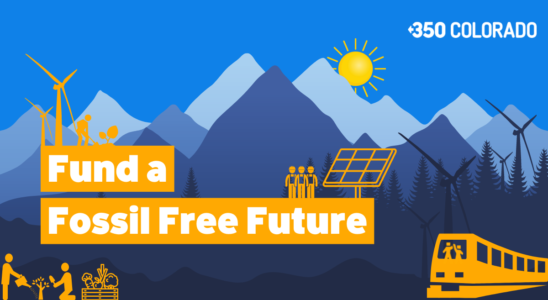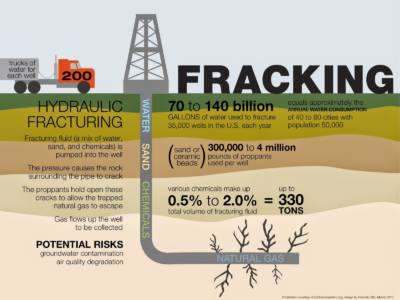Current Research & Background
Pledge to sign the petition to place the Fracking Phase Out ballot initiative on the 2024 Colorado statewide ballot!
Join the 350 Colorado Stop Fracking Committee to take action against fracking in your community!
Fracking is a heavy industrial process whereby millions of barrels of water are mixed with hundreds of undisclosed and often toxic chemicals and then injected into the earth under extremely high pressure to force oil and natural gas (methane) to the surface. Research and on the ground experiences have proven that fracking poses grave risks to public health, clean air and water, and a stable climate.
Studies by NOAA and other researchers have shown vast leakage of methane – a potent greenhouse gas – from fracking well-heads.
They have documented that about 4% of natural gas production in the Denver-Julesberg Basin is leaking directly into the atmosphere and found as much as 17% of total methane produced leaking in other regions. This has resulted in some researchers surmising that fracking may be as dangerous to our climate as burning coal—if not more so.A study by the EDF and Princeton University suggests that shifting from coal-fired generators to natural gas only has climate benefits if the cumulative leakage rate is below 3.2%.
Emissions, toxic chemical spills, negative effects on human and animal health, water and air contamination, decreasing property values and other deleterious impacts from this industry are well documented.
Click here to read & watch stories about the impacts of fracking from people living the fracking frontlines.
Colorado Fracking Health impacts:
- Click here to watch a video from Dr. Catherine Thomasson’s (from Physicians for Social Responsibility) presentation about Public Health and Fracking. It’s about an hour long. (Very important info. Please share with friends and family!)
- Click here to check out this great PDF on the health impacts of fracking in Colorado by PSR!
- Researchers have found that pregnant women living within two-thirds of a mile of a hydraulic fracturing well were 25% more likely to give birth to a worryingly small infant than were women who lived at least 10 miles outside that zone during pregnancy. Over these babies’ lifetimes, their low birth weights raise the likelihood they will suffer poorer health and lower achievement, including reduced earnings and educational attainment. Read the study here.
- There is clear evidence that fracking air emissions put nearby residents at increased risk of cancer.
According to the TEDX The Endocrine Disruption Exchange, many of the hundreds of chemicals used in oil and gas operations have been shown to have severe impacts on wildlife and human health, including the respiratory, digestive, immune, reproductive and nervous systems.
- A recent analysis of 353 of the 632 chemicals used during natural gas operations found that more than 75% of the chemicals could affect the skin, eyes, and other sensory organs, and the respiratory and gastrointestinal systems. Approximately 40-50% could affect the brain/nervous system, immune and cardiovascular systems, and the kidneys; 37% could affect the endocrine system; and 25% could cause cancer and mutations.
- Resources on human rights work with respect to fracking and climate change can be found here.
- Watch this webinar from Halt the Harm to learn more about national health impact studies related to oil and gas development.
- Fracking and Health: Ask an Expert – SAFE SETBACK DISTANCES: In their latest podcast, TEDX asks: “How can we determine safe setback distances from oil and gas operations?” Hear answers from Dr. Marsha Haley, Physician and Clinical Assistant Professor at the University of Pittsburgh Medical Center. Her concern over the proximity of wells to local schools led to a study on the adequacy of state setback distances in three shale plays. In this 8-minute podcast she discusses the factors that must be addressed to minimize risk when determining setback distances and recommends strategies for developing meaningful dialogue between affected communities and lawmakers. Listen now to the short podcast on Soundcloud, iTunes, Stitcher, or our website.
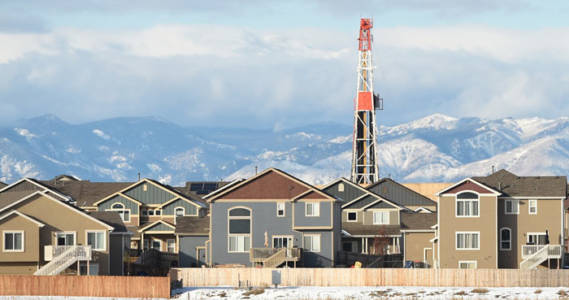
- Submit a question to Fracking and Health: Ask an Expert.
- Click here for more resources from TEDX on connections between health and oil and gas development
- Between 2008-2012, Colorado Department of Public Health and the Environment (CDPHE) released this compendium of health and environmental studies regarding oil and gas wells
Colorado Fracking Water Impacts:
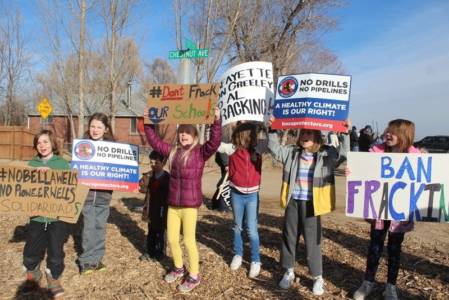
- A recent study shows 30-40% of oil spills in the Greater Wattenberg Area of the Denver-Julesburg Basin resulted in groundwater contamination from 2007-2014.
- Over a 3 year period in Colorado, more than 1,000 fracking-related spills of diesel fuel, oil, toxic chemicals, and other contaminants, dozens of which have polluted groundwater were documented.1
- Unfortunately, 1,500- or 2,000-foot setbacks of wellheads, tanks, and other equipment from property lines cannot ensure the protection of precious groundwater, which spans these artificial lines, and therefore so can toxic fracking chemicals.
- “Wasted Water: The Impacts of Fracking’s Water Use from Pennsylvania to Colorado” – get the latest from Halt the Harm Network!
Why should any resident be subjected to fracking within sight or breath of businesses, schools or homes, when the danger is so clear and well documented?
Fracking State of Affairs
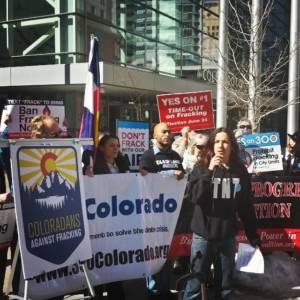 Until 2019, state regulations have failed to represent the will and best interests of the people. Several years ago, 350 Colorado joined dozens of allied organizations to launch a statewide coalition called Coloradans Against Fracking to put a stop to dirty, dangerous fracking in our state.
Until 2019, state regulations have failed to represent the will and best interests of the people. Several years ago, 350 Colorado joined dozens of allied organizations to launch a statewide coalition called Coloradans Against Fracking to put a stop to dirty, dangerous fracking in our state.
We are growing the movement to stop fracking in Colorado by educating thousands of Coloradans, holding our elected officials accountable, and pushing back against the oil and gas industry’s plans to place thousands of wells next to homes, schools, public parks, and pristine areas in our state.
Local communities like Longmont and Ft. Collins passed local bans and moratoria to protect themselves faced lawsuits, but in May of 2016, the CO Supreme Court ruled that the State has preemption over local communities and overturned the bans and moratoria. 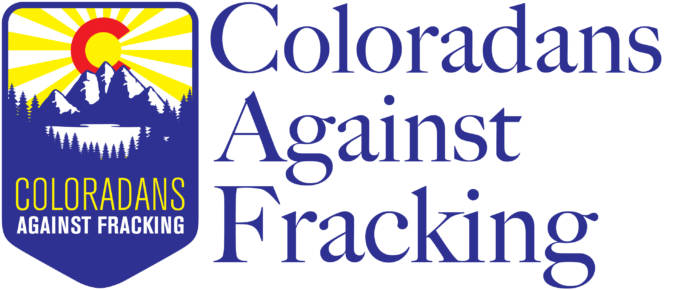 In 2016, people fought for 2 statewide ballot initiatives (75 and 78) to restrict fracking in Colorado by allowing local community control of fracking and increasing setbacks (buffer zones) from wells to homes, schools, and waterways to 2500 feet. The oil and gas ndustry spent millions of dollars fighting the initiatives, which despite receiving enough signatures to get on the ballot, had too many thrown out by the Secretary of State’s Office and thus failed to make the ballot.
In 2016, people fought for 2 statewide ballot initiatives (75 and 78) to restrict fracking in Colorado by allowing local community control of fracking and increasing setbacks (buffer zones) from wells to homes, schools, and waterways to 2500 feet. The oil and gas ndustry spent millions of dollars fighting the initiatives, which despite receiving enough signatures to get on the ballot, had too many thrown out by the Secretary of State’s Office and thus failed to make the ballot.
The oil and gas industry was also the primary funder of ballot initiative 71 which made it far more expensive and difficult to pass ballot initiatives in the future. In March of 2017, in the Martinez vs. COGCC decision, the Colorado appeals court said that the state must protect health and environment before allowing oil and gas drilling, siding with Boulder teen Xiuhtezcatl Martinez and other youth plaintiffs, saying the protection of public health and the environment is “a condition that must be fulfilled”.
On May 2, 2017, an Anadarko well which had an open gas line venting gas under a house in Firestone causing it to explode, killing two brothers-in-law and seriously injuring a mother and child. Later that month, after thousands of letters and calls were sent to the COGCC and Governor Hickenlooper from constituents asking them not appeal the Martineze v. COGCC decision, the Governor rationalized that this position represented no change — public health and safety have always come first, don’t you know — and therefore the state did not need to appeal the ruling. The attorney general said nonsense and filed an appeal over the governor’s objection.
Imagine that: a state official arguing against prioritizing public health and safety to continue feeding the insatiable industry that helps to fund her campaigns. So, once more, it is up to the Supreme Court. (See this op ed for more of the back story.)
The time has come for Coloradans to take a stand for the health and safety of our communities. This is our Colorado and we must preserve our right to protect our families, properties and way of life.
Learning Resources:
- Is fracking safe?
- http://www.protectourcolorado.org/research-facts/
- http://www.questionfracking.
org - Information on spills and groundwater contamination in: 1) Colorado: Bruce Finley, “Drilling spills rise in Colorado, but fines rare,” The Denver Post, February 22, 2012; and 2) Pennsylvania: PNAS-2013-Jackson-Water Contamination Marcellus
- “CU-Boulder, NOAA study uncovers oil and gas emission’s ‘chemical signature’, Study finds that more than half of ozone-forming pollutants in Erie come from drilling activity“, By John Aguilar, Camera Staff Writer. Posted: 01/16/2013

Fracking Health impacts studies
- “Study shows air emissions near fracking sites may pose health risk,” University of Colorado Denver Newsroom, March 19, 2012
- http://concernedhealthny.org/
category/documentation/peer- reviewed/ - Health impacts on livestock: http://www.theecologist.org/News/news_analysis/1784382/livestock_falling_ill_in_fracking_regions_raising_concerns_about_food.html
- Resources that discuss the elevated amounts of methane leaking from natural gas wells, the natural gas piping infrastructure and leaking at end use sites (i.e. a kitchen stove). Methane is potent greenhouse gas:
- http://www.nature.com/news/methane-leaks-erode-green-credentials-of-natural-gas-1.12123
- CIRES, NOAA observe significant methane leaks in a Utah natural gas field
Air sampling reveals high emissions from gas field : Nature News & Comment - Methane leaks erode green credentials of natural gas : Nature News & Comment
- Bridge Out: Bombshell Study Finds Methane Emissions From Natural Gas Production Far Higher Than EPA Estimates | ThinkProgress
- NOAA ESRL CSD: News & Events 2013
- Colorado oil and gas wells emit more pollutants than expected
- Airborne measurements confirm leaks from oil and gas operations
- ▶ Lethal gas/oil wells: Anthony Ingraffea at TEDxAlbany 2013 – YouTube
-
The following film deals with methane on a global scale and is very sobering: Arctic Death Spiral and the Methane Time Bomb – YouTube
